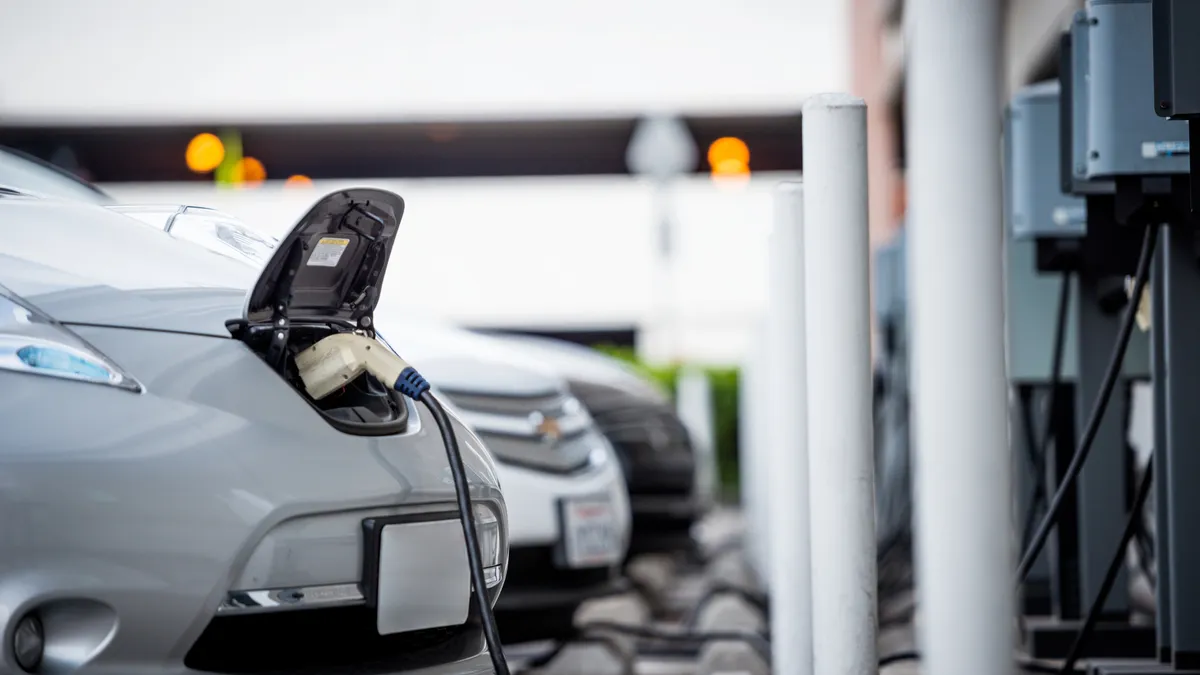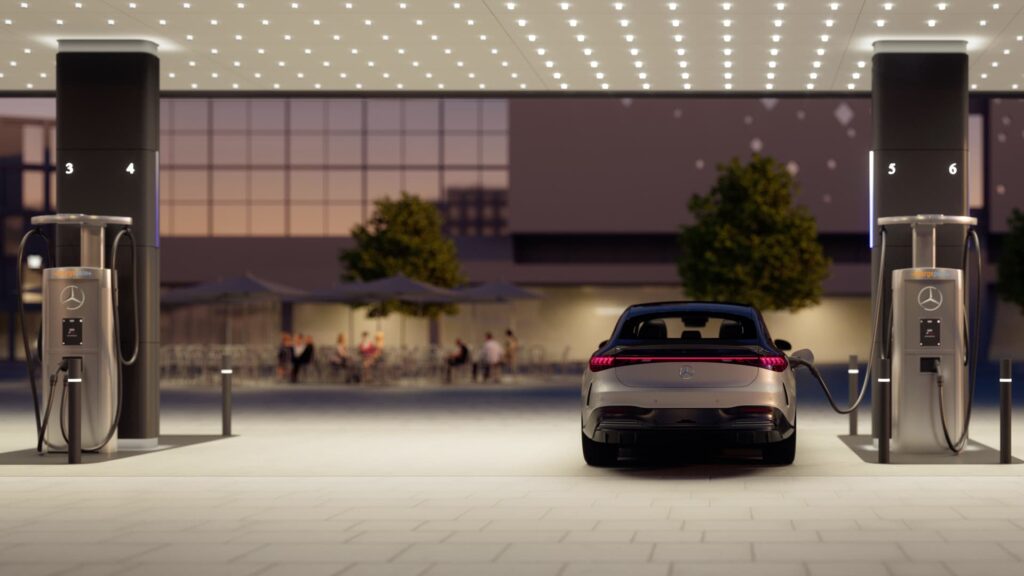How to Stay Updated on Industry Developments When You Buy EV Charging news
How to Stay Updated on Industry Developments When You Buy EV Charging news
Blog Article
Top EV Charging Information: Secret Updates on Infrastructure and Advancement

Recent Developments in Fast-Charging Technology

In addition, innovations in battery modern technology, including enhanced thermal monitoring systems and higher energy density batteries, enhance fast-charging abilities. These growths mitigate the risk of battery deterioration during fast charging, ensuring long life and efficiency for EV proprietors.
Additionally, the combination of smart charging remedies is improving individual experience, enabling real-time surveillance and dynamic rates models. EV Charging news. This adaptability allows vehicle drivers to optimize charging times and expenses based on grid need
As automakers remain to buy fast-charging networks, the collaboration in between industry stakeholders is important. Collaborations between billing terminal providers and automotive makers are paving the means for considerable coverage, ultimately fostering an extra durable EV ecosystem. These improvements are essential in supporting the transition to sustainable transportation.
Government Initiatives for Charging Growth
Federal government campaigns play an essential function in the development of electric car (EV) charging infrastructure, promoting the shift to lasting transportation. Numerous federal and state programs are being carried out to boost charging availability, reduce the financial worry on consumers, and promote the adoption of electric cars.
Notably, the united state government has designated significant financing through the Infrastructure Financial Investment and Jobs Act, which sets aside $7.5 billion for EV billing network advancement across the country. This financing is intended at deploying thousands of brand-new billing stations, especially in underserved areas, thereby resolving array stress and anxiety amongst prospective EV buyers.
In addition, countless states are enacting legislation to simplify the permitting procedure for billing terminal setups, which is important for speeding up implementation. Rewards such as tax obligation credit ratings and discounts for both customers and services are additionally being presented to urge the setup of billing framework.
Additionally, public-private partnerships are progressively becoming a focus, leveraging private financial investment to enhance federal government funding. These initiatives emphasize a collaborative method necessary for building a thorough and effective EV charging network, eventually contributing to a greener and more lasting future.
Cutting-edge Battery Solutions Enhancing Effectiveness
Reinventing the landscape of electrical car (EV) modern technology, innovative battery services are dramatically boosting performance and efficiency. Advances in battery chemistry, especially with lithium-sulfur and solid-state batteries, are causing raised energy density, which enables longer ranges and faster billing times. These brand-new battery types have the potential to outmatch standard lithium-ion batteries by using greater abilities while reducing weight, thereby boosting overall vehicle effectiveness.
Additionally, advancements in battery monitoring systems (BMS) are enhancing power use and expanding battery lifespan. Smart algorithms keep track of battery health and performance, making it possible for real-time changes to billing and releasing processes. This not just enhances the performance of the battery yet also makes sure an extra reputable and sustainable power resource for EVs.
In over at this website addition, the combination of recycling technologies is dealing with the environmental effect of battery production and disposal. Technologies in second-life applications for EV batteries are promoting their usage in energy storage space systems, contributing to a circular economic climate.
As these cutting-edge battery remedies remain to develop, they guarantee to transform Continue the EV market, making electrical automobiles a lot more obtainable and enticing to a more comprehensive audience while supporting global sustainability goals.

Cooperation Between Automakers and Charging Networks
Identifying the crucial demand for a robust charging infrastructure, car manufacturers are increasingly collaborating with charging network carriers to enhance the EV ownership experience (EV Charging news). These collaborations intend to produce a seamless charging ecosystem that profits customers and sustains the transition to electric cars
Major vehicle brand names are signing up with forces with established billing networks to expand their charging station insurance coverage, ensuring chauffeurs have accessibility to reputable and convenient billing alternatives. Partnerships with networks like ChargePoint and Electrify America enable automakers to integrate charging services straight into their cars' navigating systems, directing users to the nearby terminals and offering real-time schedule updates.
In addition, these cooperations usually lead to the advancement of fast-charging technologies that dramatically reduce the time required to reenergize an EV. By merging sources and experience, automakers and charging networks can innovate faster, creating remedies that fulfill the expanding demand for electric movement.
In enhancement, joint initiatives might likewise cause even more standardized billing methods, which can minimize consumer complication and promote more comprehensive EV fostering. In general, these critical partnerships are essential in developing a efficient and user-friendly charging infrastructure that fulfills the requirements of an expanding electrical vehicle market.
Challenges Facing EV Charging Framework
As the electric lorry market remains to expand, numerous obstacles are emerging that hinder the growth of an extensive billing facilities. One of the primary obstacles is the inadequate number of billing terminals, specifically in underserved and rural urban areas. This gap produces array stress and anxiety among prospective EV purchasers, preventing them from making the switch.
Additionally, the lack of standardization accountable innovation makes complex the facilities landscape. Variations in plug types and charging speeds can produce confusion for customers and raise functional intricacies for billing network operators. The combination of billing terminals into existing electrical grids postures substantial challenges. Several areas face capability constraints, calling for substantial financial investments in grid upgrades to accommodate increased need.
Another pressing issue is the high price related to the setup and maintenance of charging stations, go to website which can be a barrier for both public entities and private organizations. Regulatory hurdles and zoning constraints can delay the deployment of charging infrastructure, hindering progress in expanding crucial services. Addressing these difficulties will be vital for promoting a durable EV ecological community that sustains the transition to lasting transportation.
Verdict
Finally, the recurring advancements in EV billing innovation, sustained by considerable government initiatives and ingenious battery remedies, are vital for the growth and efficiency of electrical vehicle framework. Partnerships in between automakers and charging providers further boost terminal coverage, dealing with the expanding demand for obtainable billing alternatives. Despite challenges that continue within the EV billing landscape, these growths symbolize a positive trajectory in the direction of a more effective and lasting electrical vehicle ecological community.
Developments in charging infrastructure have led to the advancement of ultra-fast chargers qualified of providing up to 350 kW of power, considerably decreasing billing times. Variants in plug types and charging speeds can create confusion for users and increase operational intricacies for billing network operators.In final thought, the recurring developments in EV charging technology, sustained by considerable federal government efforts and innovative battery solutions, are essential for the expansion and efficiency of electrical vehicle facilities. Cooperations in between automakers and charging service providers better enhance terminal insurance coverage, dealing with the expanding demand for accessible charging choices. In spite of challenges that linger within the EV billing landscape, these advancements represent a positive trajectory in the direction of an extra lasting and effective electric lorry community.
Report this page